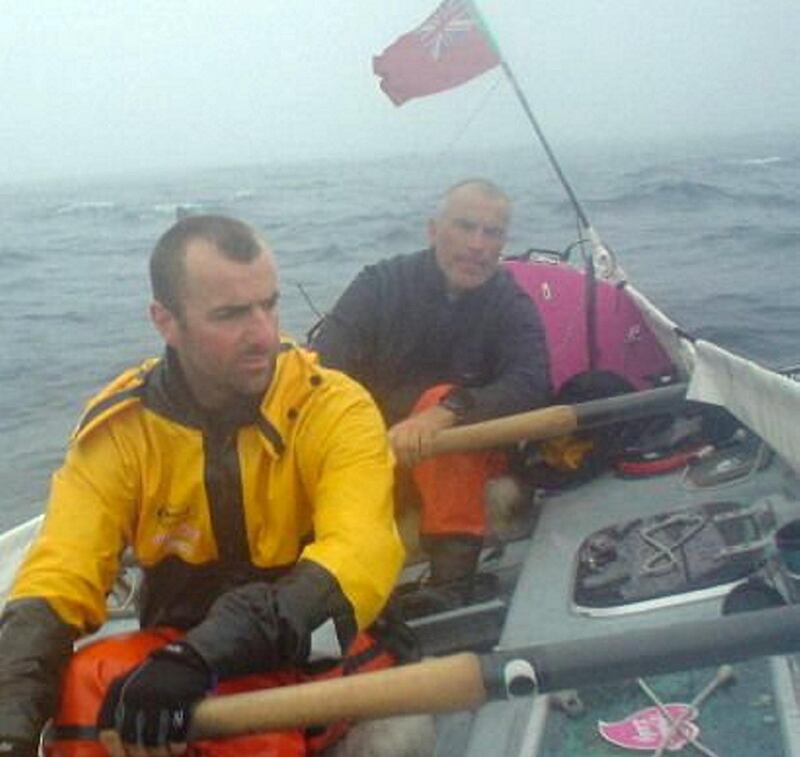We were sponsored by an apple company and, as serendipity would have it, when our hi-tech carbon-fibre rowing boat was snapped clean in two by the sheer violence of a north Atlantic storm, the four of us were rescued by a banana boat.
So it was the description "hi-tech" that jumped out at me when I first read about Dubai team Row4Ocean's attempt to row across the Atlantic from Africa to south America.
That, and the sight of the high-sided multi-hulled craft the crew of four have chosen for the job.
On June 30, 2004, I and three others set off from Newfoundland in Canada, planning to row the 2,000 or so miles across the North Atlantic in a then record time of under 55 days.
Our boat, Pink Lady, was ultra-modern, ultra-lightweight and, ultimately, ultra-fragile – and no match for the worst that the Atlantic could throw at it.
At about 2am on the morning of August 8, 2004, 200 miles southwest of Ireland and within a few days of victory, we were overtaken by the tail end of Hurricane Alex.
Chaos doesn’t describe the sea state that engulfed us, though data from meteorological buoys in the vicinity would reveal that the wave that snapped the Pink Lady clean in two was as high as a four-storey building.
The more southerly, east-west route to be followed by the Row4Ocean team will keep them well out of the Atlantic’s more vicious northerly latitudes. On the other hand, two of the seven men killed attempting to row across the Atlantic since 1966 have perished on the east-west route.
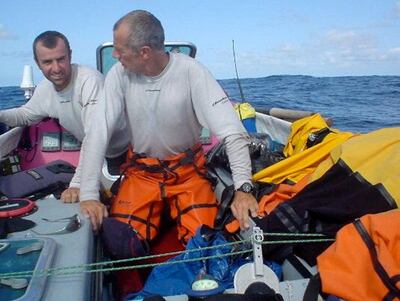
Travelling from Dakar in Senegal, aiming for Suriname, the crew should benefit from the seasonal trade winds that will be blowing in their direction of travel.
But having experienced the leeway that even a low-profile boat can suffer in moderate breezes, I worry that the high sides of their boat may leave the crew burning much valuable energy simply battling to stay on course.
To keep the boat constantly moving forwards, a crew of four are likely to row in two shifts, with two men at the oars for two hours while the other watch rests. No amount of training can prepare anyone for the ordeal of rowing 12 hours a day, but the crew of Year of Zayed will find their bodies will adjust to what at first will seem like an impossible regime.
The first days will be tough – if anyone is going to be seasick it will be then. But even though they might feel like death, they must continue to eat and, most importantly, drink.
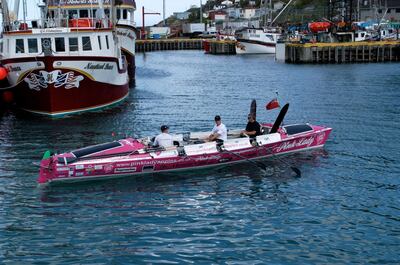
When they aren’t rowing, the two hours off the oars won’t all be spent tucked up in a sleeping bag. Much of the time will have to be devoted to chores, such as operating the water-making machine, cooking food and taking care of personal hygiene.
There is no torture to compare with the vicious saltwater boils that can develop on a rower’s backside after days at sea. Washing may seem like a luxury when you’re exhausted, but cleanliness – and liberal applications of the antiseptic Sudocrem, as used by generations of parents to battle nappy rash – can make the difference between success and agonising failure.
One advantage of a trimaran is that it is much harder to capsize than a monohull. On the other hand, if it does go over there is no chance of righting it again. Properly ballasted, a monohull will simply bob back up again after a capsize.
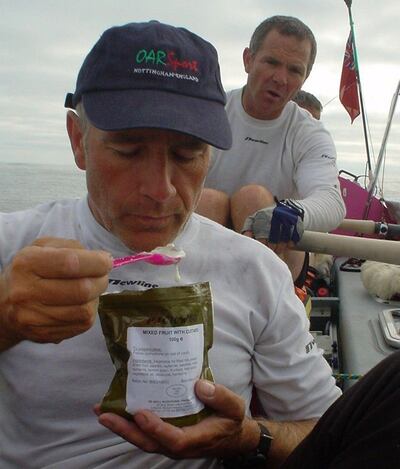
There is, in fact, a lot to be said for simplicity when it comes to ocean rowing – the more complex the boat, and its equipment, the greater the chance of something going wrong.
After all, when George Harbo and Frank Samuelson became the first to row across the Atlantic in 1896, they had no shelter, no waterproof clothing, no water-maker, no satellite naviation, no radio, no emergency beacon, no solar panels and no sliding seats. The vessel in which they rowed from New York to the Isles of Scilly in 55 hellish days was a simple but sturdy 18ft open wooden boat.
No matter how fancy their craft, the crew of the Year of Zayed share one thing with Harbo and Samuelson – the guts to have a go at achieving something extraordinary.
If I had one bit of advice to offer them, it would be this: don’t let courage morph into stupidity – at sea in a small boat, the slightest lapse can undo you.
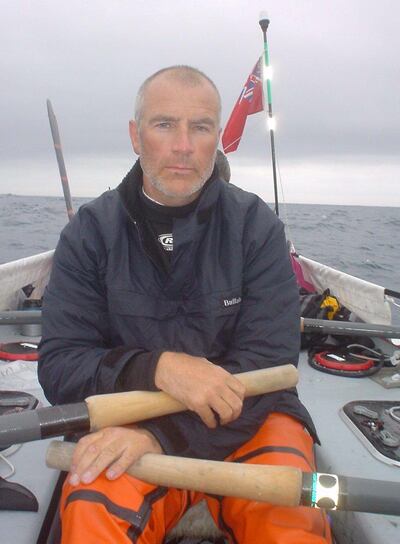
Before the Pink Lady was snapped in half in 2004, we had all put on our sealed survival suits. It became increasingly hot in the tiny aft cabin and, minutes before the killer wave struck, I undid my suit, just to let in a little air. Stupid.
When somehow I managed to escape from the tangled web of wires and shattered carbon fibre, as my suit filled with Atlantic I found myself sinking under instead of rising with the towering waves.
Just when I thought I was done for, a crewmate surfaced and dragged me to the remains of the upturned hull. The other two appeared and we were able to recover and inflate our small liferaft. The following morning, after a display of great seamanship in the atrocious conditions by the Danish skipper and Filipino crew of the Scandinavian Reefer, we were hauled to safety.
Recovering in the officer’s mess after a splendid breakfast, they sat us down in front of an educational video – The Perfect Storm.
_________________
Read more:
Dubai rowers target four world records in Atlantic challenge
